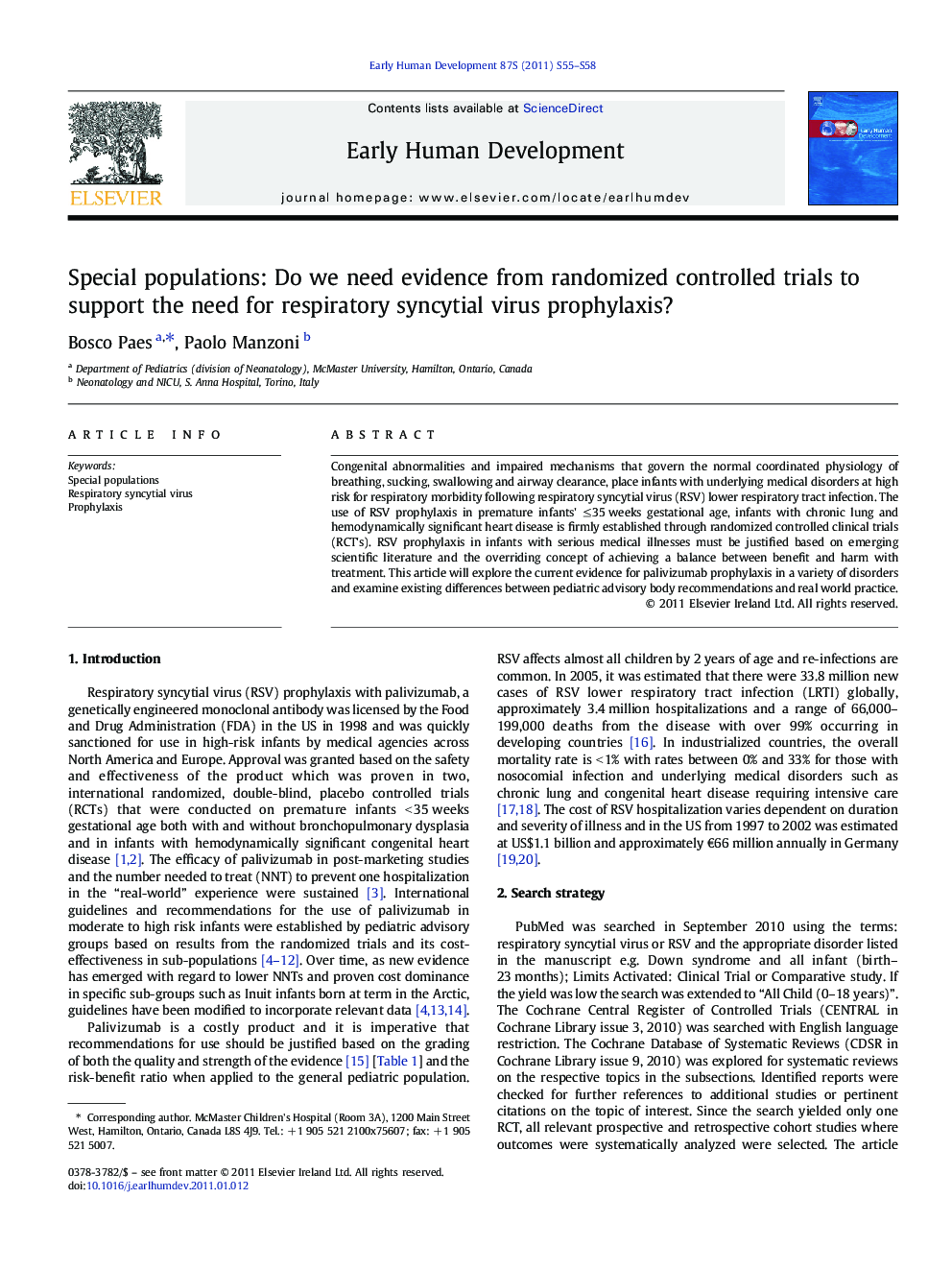| Article ID | Journal | Published Year | Pages | File Type |
|---|---|---|---|---|
| 3917463 | Early Human Development | 2011 | 4 Pages |
Congenital abnormalities and impaired mechanisms that govern the normal coordinated physiology of breathing, sucking, swallowing and airway clearance, place infants with underlying medical disorders at high risk for respiratory morbidity following respiratory syncytial virus (RSV) lower respiratory tract infection. The use of RSV prophylaxis in premature infants' ≤ 35 weeks gestational age, infants with chronic lung and hemodynamically significant heart disease is firmly established through randomized controlled clinical trials (RCT's). RSV prophylaxis in infants with serious medical illnesses must be justified based on emerging scientific literature and the overriding concept of achieving a balance between benefit and harm with treatment. This article will explore the current evidence for palivizumab prophylaxis in a variety of disorders and examine existing differences between pediatric advisory body recommendations and real world practice.
